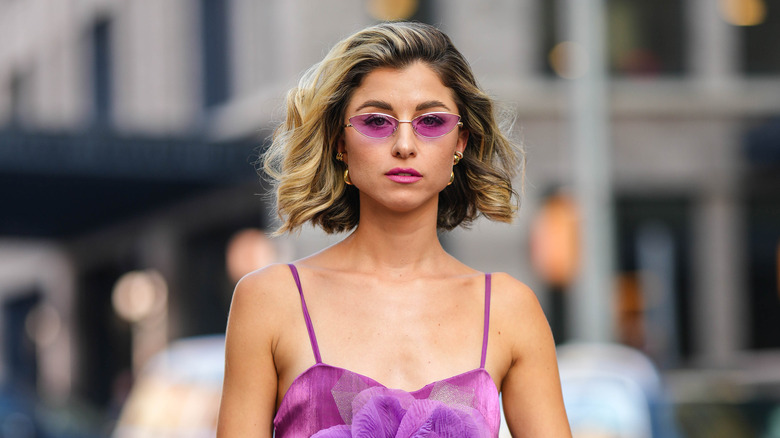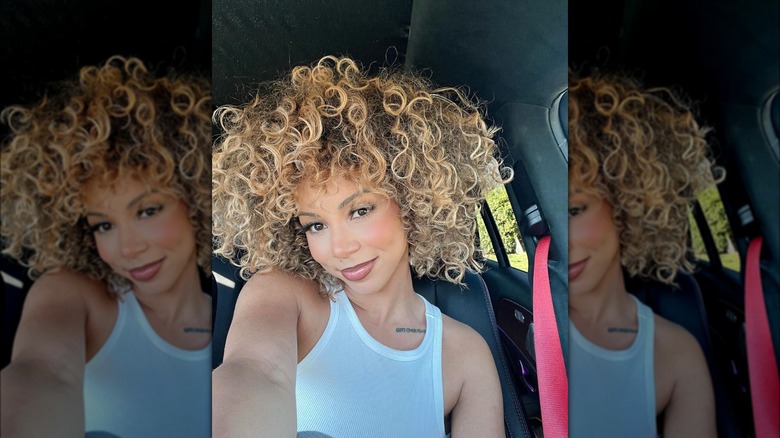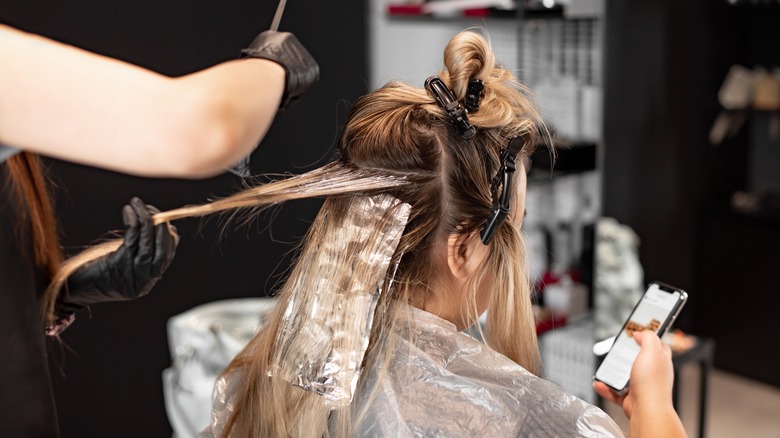Want Hair Dimension With Minimal Damage? Enter The Shadow Root
"Your roots are showing." You might've heard this phrase — often laced with some subtle shaming — years ago, when it was considered embarrassing for the world to know you're not a natural blond. Thankfully, dark roots are no longer seen as an accident; they've been given their own seat at the beauty table, thanks to the shadow root trend.
In the 2010s, shadow roots involved applying a bright shade, such as hot pink or electric blue, to the roots, creating a neon "shadow" effect. These days, the look is much less high-maintenance, spotlighting naturally dark roots and saving you from constantly going back into the salon for hair color touch-ups.
Just as its name suggests, shadow roots involve a soft color fade rather than harsh lines. To achieve the effect, Lauren Grummel, a hairstylist in New York, told Glamour that the roots should first be dyed one shade lighter than your natural color, with the lightest hues coming further down the hair shaft (similar to balayage). Then, when the hair grows out, the new growth blends seamlessly with your locks.
Shadow roots offer easygoing dimension to your mane
Shadow roots might sound like a lazy girl's dream, but the style is anything but basic. The coloring adds depth and dimension to lackluster locks, Abby Haliti, colorist and founder of Abby Haliti Color Studio, told InStyle. It can also make an extreme dye job (like, say, bleaching naturally black hair an icy blond shade) look softer and more natural.
There's also no right or wrong way to rock the look — and, yep, it can even work for those who already have light hair. "How far down the hair the gloss or tint is smudged will be dependent on how much dark to blonde you would like to see," Siobhan Jones, L'Oréal global ambassador and founder of Creative Balayage, shared with Stylist. "This would be diagnosed by your colourist depending on your haircut, face shape and image reference. You can opt for a colour that mimics your natural colour, or you can change it up by making it warmer, cooler, lighter or darker than that."
Save your strands and scalp from damage
Salon treatments aren't always so kind on hair, and bleaching and lightening are no exception. "Bleach contains chemicals that break down the protein bonds in hair, which lifts pigment and lightens the hair," Sasha Faye, a hairstylist and colorist at Michele Holmes Studio in California, explained to RealSimple. "If improperly processed, it can damage the hair cuticle resulting in dry, brittle, and sometimes broken hair strands." You may have learned this the hard way in the past when a new color turned your hair frizzy or even led to hair loss.
While shadow roots still leave space for lighter shades and face-brightening highlights, they don't require as much upkeep as many other styles. As a result, new growth is left untouched instead of being chemically processed ASAP, saving your roots from potential damage.
Your scalp may also benefit from the shadow root look. According to Healthline, applying bleach right up to the scalp can lead to chemical burns, flaking, itchiness, and other forms of irritation. The best way to protect the scalp, besides going to a trusty hairstylist, is to space out your touch-ups. Dimension without the damage? Shadow roots are a win-win.


